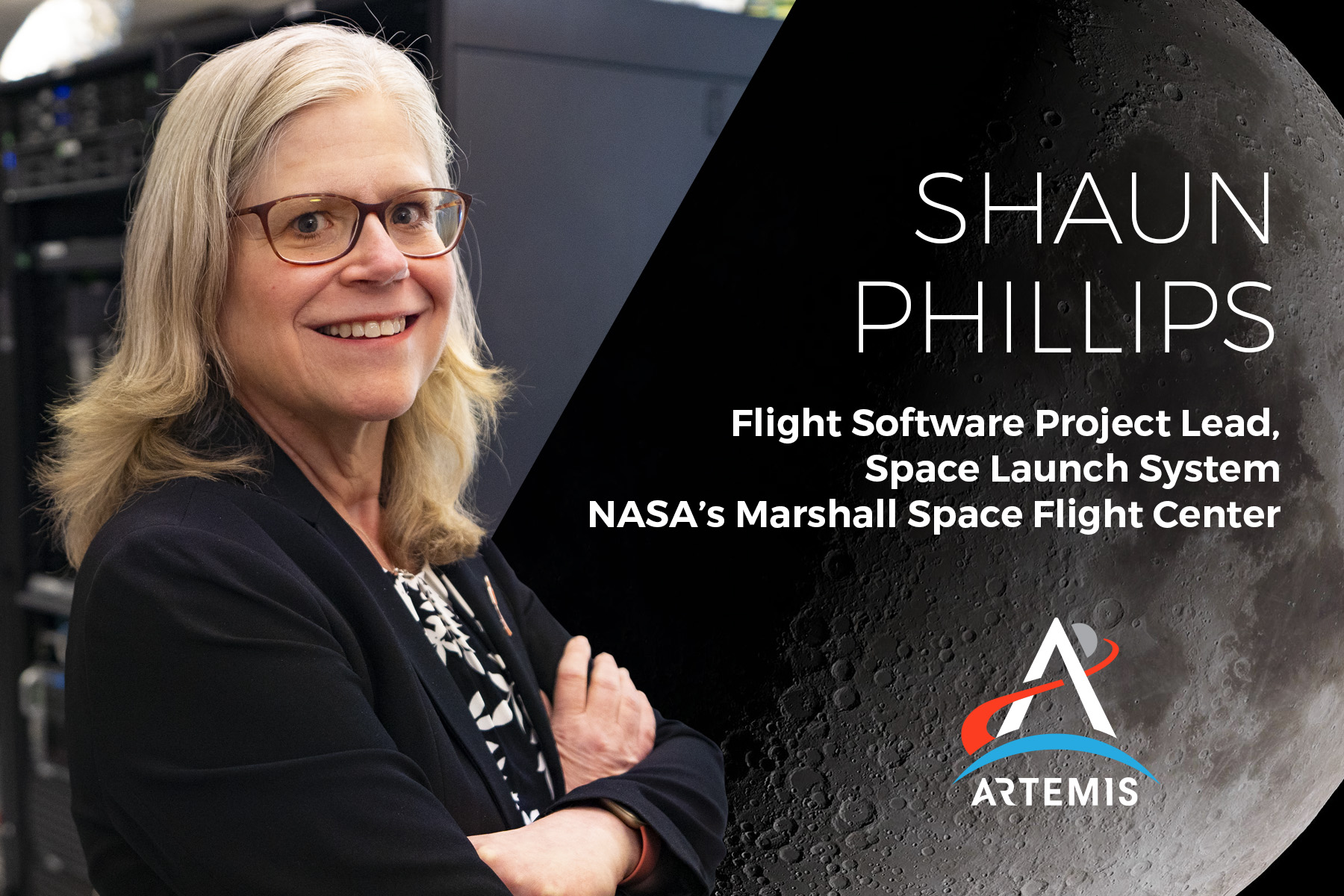A young Shaun Phillips was inspired by the earliest efforts to learn how to send people to space.
“As a child, my siblings and I would read about Apollo astronauts, and when we moved to Huntsville, Alabama, we visited the US Space and Rocket Center often and I remember seeing Miss Baker who lived there at the time,” said Phillips, flight software project lead for NASA’s Space Launch System (SLS) rocket at NASA’s Marshall Space Flight Center in Huntsville. Miss Baker, a squirrel monkey, launched into space on a sub-orbital flight in 1959, when scientists used animals to test the ability to launch living organisms into space and bring them home. “Looking back, NASA has always been a part of my life.”
Now, Phillips leads a team of over 60 people who design, develop, and test the flight software that will provide autonomous control of the SLS rocket during launch and ascent. Her team also develops software requirements, codes and supports configuration management, in-house tools, and operations. Phillips leads and guides the team and coordinates with other parts of the SLS program.
“My team is dedicated and passionate,” said Phillips. “Everyone is very excited about the upcoming launch of Artemis I, where it will fulfill many of our dreams of beginning the journey back to the Moon.”
Phillips was raised in a military household and traveled most of her life. Her parents settled down in Huntsville when she was a sophomore in high school. She received a bachelor’s degree in Math from the University of Alabama at Huntsville and not long after decided to pursue a path at Marshall, leading to her now 32-year career. She has processed, designed, coded, and tested software throughout her career. Previously, she has supported NASA’s Spacelab and Ares programs, both of which have prepared her for her current role.
“The most exciting aspect of my job is being able to experience our software as it controls the SLS rocket,” said Phillips as she recalled watching the SLS Green Run hot fire test when a test version of the flight software controlled the rocket’s core stage as all four engines were fired.
Currently, Phillips and her team are supporting integrated test and checkout activities at NASA’s Kennedy Space Center in Florida, with the flight software that will control the rocket for the first 8 minutes of flight during Artemis I.
“I am looking forward to seeing our software perform at the upcoming wet dress rehearsal and then the Artemis I flight itself!”

























